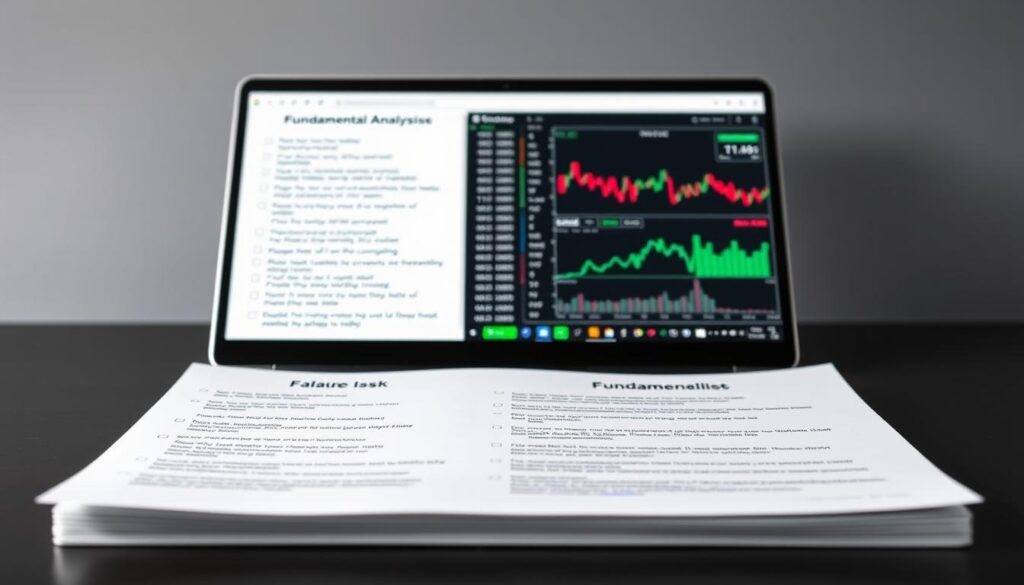Now Reading: The Impact of Hash Rate Analysis on Bitcoin Mining Difficulty
- 01
The Impact of Hash Rate Analysis on Bitcoin Mining Difficulty
The Impact of Hash Rate Analysis on Bitcoin Mining Difficulty

The world of digital currency relies on a complex, self-adjusting system to keep everything running smoothly. This system ensures new blocks of transactions are created at a steady pace. A key part of this process involves measuring the total computational power dedicated to the network.
This measurement of power is a vital sign of network health and security. When this power fluctuates, the system responds by changing how hard it is to find new blocks. This adjustment happens automatically every two weeks to maintain balance.
Recent times have shown some of the most significant drops in this adjustment metric in years. Understanding these shifts offers a clear window into miner behavior and overall blockchain stability. This knowledge is crucial for anyone interested in the fundamental mechanics of the market.
Key Takeaways
- The network’s difficulty adjusts automatically to keep block production times consistent.
- Computational power on the network is a primary indicator of its security and activity levels.
- Significant changes in power can lead to some of the largest adjustments seen in the system’s history.
- Analyzing these trends provides insight into miner operations and potential market shifts.
- This adjustment mechanism is a core feature that maintains the stability of the entire ecosystem.
- Geographic and seasonal factors can heavily influence the computational power dedicated to the network.
Overview of Hash Rate and Bitcoin Mining Difficulty
Digital asset networks employ an ingenious self-correcting protocol to maintain consistent transaction block creation. This system relies on two interconnected metrics that govern the entire operation.
Defining Hash Rate and Mining Difficulty
The total computational effort dedicated to processing transactions is measured as network power. This collective processing capacity determines how quickly mathematical puzzles can be solved.
Meanwhile, the challenge level automatically adjusts to ensure stable block intervals. When more processing units join the system, the mathematical complexity increases proportionally.
How Difficulty Adjustments Work
The protocol examines the actual time taken to process the previous 2,016 transaction groups. Based on this analysis, it recalibrates the mathematical challenge for the next cycle.
This occurs approximately every two weeks, creating a self-regulating mechanism. The system maintains predictable transaction processing regardless of participant fluctuations.
Understanding these fundamentals provides insight into network health and security measures. These metrics serve as vital indicators of ecosystem stability and participant engagement levels.
Evolution of Bitcoin Mining: From China to U.S. Dominance
The geographic landscape of cryptocurrency processing has undergone a dramatic transformation over the past decade. This shift fundamentally altered how computational power distributes across global networks.

The China-Dominated Mining Era
From 2013 through 2020, Chinese facilities controlled the majority of global processing capacity. Operations concentrated in Sichuan and Yunnan provinces where hydroelectric power provided abundant, low-cost electricity.
The rainy season from May to September created ideal conditions for expansion. During these months, processing power consistently increased due to favorable energy costs.
Rise of U.S. Mining Operations
China’s comprehensive ban in June 2021 triggered a massive migration of infrastructure. Professional operations established large-scale facilities primarily across North America.
The United States emerged as the new global leader by 2022. This transition represented one of the most significant relocations in digital asset history.
Shifts in Seasonal Hash Rate Patterns
The seasonal rhythm of processing power completely reversed after the geographic shift. Summer months now correlate with reduced activity rather than expansion.
Extreme heat and elevated energy demand cause operations to scale back during May through August. This creates an inverse pattern compared to the previous era.
| Feature | China Era (2013-2020) | U.S. Era (2022-Present) |
|---|---|---|
| Primary Energy Source | Hydroelectric Power | Diverse Grid Mix |
| Seasonal Pattern | Expansion in Rainy Season | Contraction in Summer |
| Regulatory Environment | Increasing Restrictions | Developing Framework |
| Infrastructure Scale | Distributed Facilities | Industrial Operations |
hash rate analysis bitcoin mining difficulty: In-depth Trend Analysis
A deep dive into recent computational power data reveals significant, short-term fluctuations with clear causes. This examination focuses on a specific adjustment period that initially projected a substantial decrease.
The most pronounced drops were recorded at major processing pools. Sharp reductions in power output were particularly evident during the early morning of June 23rd.
Recent Trends in Computational Power Decline
Initial speculation pointed toward global conflicts as a potential trigger for the drop. However, a thorough investigation found no evidence to support these theories.
The true catalyst was environmental. Intense heat waves swept across the United States, drastically increasing energy costs.
This made operations unprofitable for many participants, forcing them to temporarily scale back. The state of Georgia, hosting a significant portion of one major company’s infrastructure, was heavily affected.

Implications for Miners and Investors
For operators, this event underscores the critical need for strategic planning. Managing energy costs and geographic diversity is essential to withstand market volatility.
Investors can view these power trends as a leading indicator. A squeeze on profitability can signal potential selling pressure from operations covering expenses.
The quick rebound after the decline confirms the event was temporary. Understanding this difference is key to assessing the network‘s long-term stability. Choosing efficient crypto mining hardware is a fundamental part of this risk management.
| Factor | Initial Hypothesis | Confirmed Cause |
|---|---|---|
| Primary Driver | Geopolitical Conflict | Extreme Weather & Energy Prices |
| Impact Duration | Potential Long-Term | Short-Term & Temporary |
| Key Lesson | Global Event Sensitivity | Operational Cost Management |
| Indicator for Investors | Fundamental Shift | Short-Term Profitability Pulse |
Technical Insights: Mining Difficulty, Hash Rate, and Network Security
A primary strength of decentralized networks lies in their ability to create massive economic barriers against malicious actions. This security is intrinsically linked to the total computational power dedicated to the system.
Network Security and 51% Attack Prevention
The most feared scenario is the 51% attack. This occurs if one group controls most of the network’s power. They could then reverse transactions.
Today’s immense processing capacity makes this nearly impossible. An attacker would need hardware worth over $12 billion. This creates a powerful financial deterrent.
The Role of Proof of Work in Digital Identity
Satoshi Nakamoto solved a key problem with “one-CPU-one-vote.” This means computational cost acts as a digital identity. It is expensive to create fake identities.
This property is called Sybil resistance. It secures the network without a central authority. The system’s challenge level automatically adjusts to maintain this security.
| Network Power Level | Attack Feasibility | Estimated Cost Barrier |
|---|---|---|
| Low | Moderate Risk | Billions of Dollars |
| Medium | Low Risk | Tens of Billions |
| High (Current) | Extremely Low Risk | Over $12 Billion |
Seasonal Hash Rate Trends and Market Dynamics for Bitcoin Mining
Climate and energy costs create predictable fluctuations in network processing capacity throughout the year. These seasonal waves significantly impact operational economics and market behavior.

Understanding Seasonal Variability in Mining Performance
The historical pattern saw computational power expand during summer months. This occurred when hydroelectric resources were abundant in key regions.
Today’s landscape shows an inverse relationship. Summer now brings operational constraints rather than expansion opportunities.
May through August typically sees reduced activity across major facilities. Extreme heat drives up cooling requirements and regional energy demand.
These dynamics directly squeeze profitability margins for operators. Higher electricity prices during peak periods compress earnings.
Market participants can anticipate potential selling pressure during these months. Operations facing reduced profitability may increase asset sales to cover costs.
Understanding these patterns helps distinguish temporary weather-related adjustments from permanent structural changes. This knowledge provides valuable context for interpreting short-term fluctuations.
Environmental and Global Factors Affecting Mining Operations
External factors ranging from weather patterns to government policies significantly impact mining economics. These elements create both immediate challenges and long-term strategic considerations for facility operators.
Impact of Inclement Weather and Rising Energy Costs
Extreme weather events directly affect operational viability. Heat waves increase cooling demands and drive up electricity prices.
When energy costs surpass profitability thresholds, rational operators scale back their activities. This temporary reduction helps preserve margins during unfavorable conditions.

Summer months now present particular challenges in many regions. The Northeast and Midwest United States experienced significant heat-related operational adjustments.
Energy price volatility represents a major risk factor for mining operations. Strategic facility placement becomes crucial for maintaining competitive advantages.
Global Events and Regulatory Influences
Government policies can rapidly reshape the entire industry landscape. China’s 2021 restrictions demonstrated how quickly operations can relocate.
Regulatory stability provides significant competitive benefits. Operations in uncertain jurisdictions face potential disruption from sudden policy changes.
Investors must consider these external conditions when evaluating mining-related assets. Environmental and regulatory factors directly impact long-term profitability and operational viability.
Conclusion
For market participants seeking to understand cryptocurrency fundamentals, few metrics offer more valuable insights than network power and validation complexity. These interconnected indicators serve as the pulse of ecosystem health, revealing critical information about security, stability, and economic dynamics.
The relationship between computational capacity and system challenge directly shapes operational economics. Geographic shifts and environmental factors create predictable patterns that influence profitability and market behavior. Understanding these dynamics helps distinguish temporary fluctuations from structural changes.
For investors, monitoring these metrics provides early signals about potential supply pressure and security changes. The self-adjusting mechanism ensures consistent block production times regardless of participation levels.
As the landscape evolves with technological and regulatory developments, ongoing analysis of these fundamental metrics remains essential for informed decision-making and risk assessment.
FAQ
What is the relationship between network hash rate and mining difficulty?
They are directly linked. The network’s total computational power, or hash rate, determines how hard it is to mine new blocks. To keep block times consistent at around 10 minutes, the system automatically adjusts the difficulty level approximately every two weeks. A higher hash rate leads to an increase in difficulty.
How do shifts in hash rate affect individual miners?
Significant changes can directly impact profitability. A rising hash rate makes mining more competitive, potentially squeezing margins for operations with older hardware or high electricity costs. Conversely, a drop in computational power can temporarily increase rewards for remaining miners until the next difficulty adjustment.
Why is a high hash rate important for Bitcoin’s security?
A robust and distributed hash rate is the backbone of the network’s security. It makes a 51% attack, where a single entity could control the blockchain, extremely costly and practically unfeasible. The immense energy and capital required to overpower the network acts as a powerful deterrent.
What factors cause the hash rate to fluctuate?
Several factors cause volatility. These include dramatic shifts in Bitcoin’s market price, changing energy costs (especially with seasonal weather impacting renewable sources), global regulatory changes that force miners to relocate, and the natural cycle of upgrading or retiring mining rigs.
How can investors use hash rate data?
Investors often view hash rate trends as a health indicator for the entire ecosystem. A consistently growing hash rate suggests strong miner commitment and network security, which can be a positive long-term signal. Sharp declines may indicate market stress or operational challenges within the mining industry.














